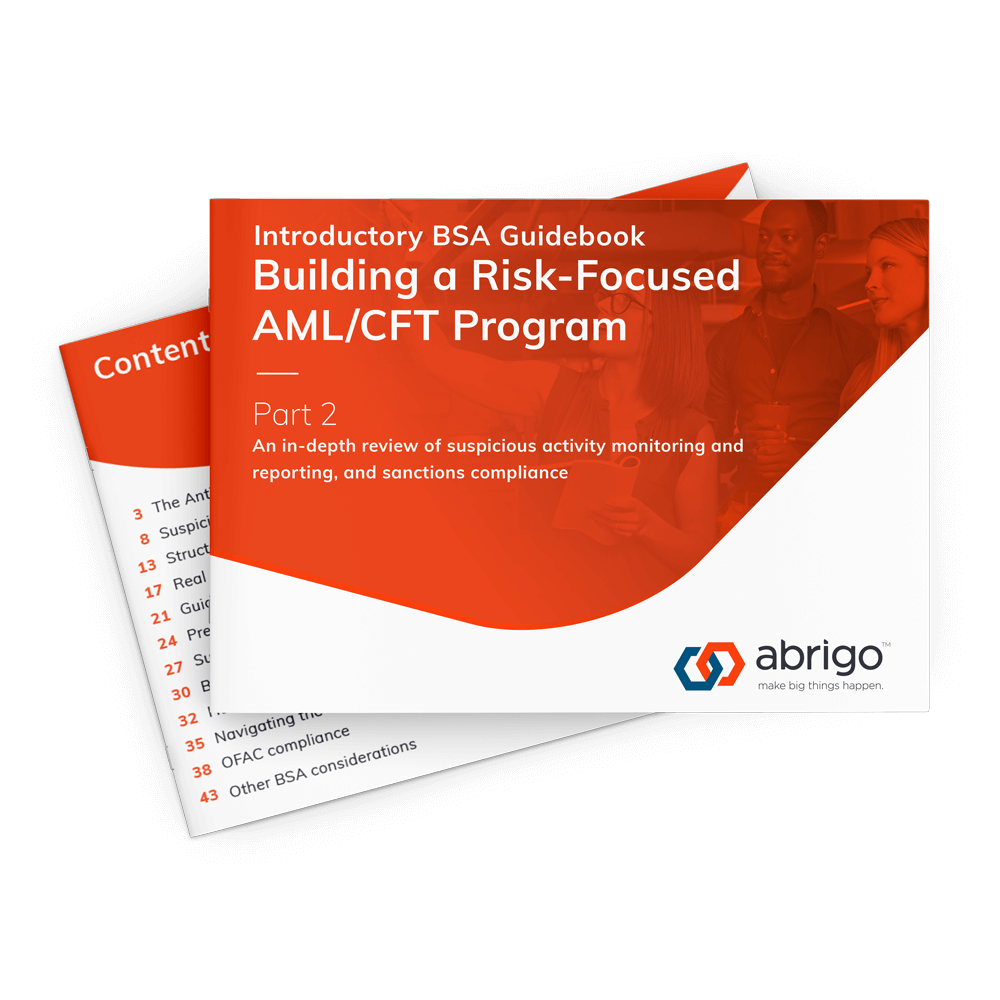This introductory guidebook for AML compliance provides an in-depth review of the AML Act of 2020, OFAC compliance, and suspicious activity monitoring for fraud and other financial crimes. Learn about:
Building a risk-focused
AML/CFT program
Part 2:
An in-depth review of suspicious activity monitoring and reporting, and sanctions compliance
Download this free training guide with best practices for establishing a risk-based AML/CFT compliance program.

Download Part 2 of our AML/CFT program guide
- Human trafficking red flags and U.S. border considerations
- Suspicious activity monitoring and reporting
- Beneficial ownership rules
- OFAC compliance and sanctions compliance
In this guide:
BSA/AML programs must incorporate and follow the Anti-Money Laundering Act of 2020.
We outline best practices on many AML/CFT topics. Part 2 covers:
- The Anti-Money Laundering Act of 2020 and suspicious activity monitoring/reporting, and structuring cash transactions
- Real estate money laundering and preventing elder financial exploitation
- Human trafficking red flags, navigating the U.S.-Mexico border, and guidance regarding the fentanyl epidemic
- Beneficial ownership rules and OFAC compliance
Get a copy of Part 2 of the Introductory BSA Guidebook in your inbox.
AMLA considerations and suspicious activity
The Anti-Money Laundering Act of 2020 (AMLA) was the first amendment to the Bank Secrecy Act in nearly two decades. As regulations and guidance continue to unfold, learn what AMLA requires and how to monitor and report suspicious activity.
Real estate money laundering and elder financial exploitation
Learn about some of the oldest and most common forms of money laundering and fraud: real estate money laundering and elder financial exploitation. Read FinCEN guidance on these topics and set up your AML/CFT and fraud programs for success.
Human trafficking red flags, navigating the U.S.-Mexico border, and guidance regarding the fentanyl epidemic
These chapters educate staff on how current events at the U.S. border may impact their AML/CFT responsibilities. Learn regulator expectations for financial institutions in areas affected by these complex issues and how to prevent financial crimes associated with them.
Beneficial ownership rules and OFAC compliance
Financial institutions act as the front-line defense and exercise preventative measures on behalf of the U.S. government. Additionally, many companies are required to begin reporting to the U.S. government information about beneficial ownership or who ultimately owns or controls them. Learn how these policy rules must be accounted for in an effective AML/CFT program.


